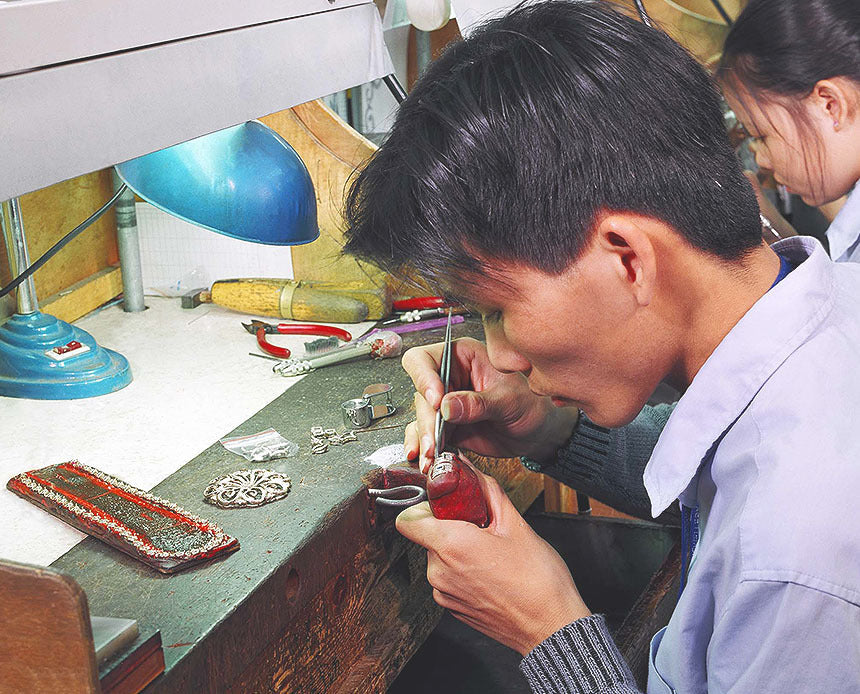
Lab-Grown Emeralds: A Guide to Cultivated Gems
In the dazzling world of gemstones, emeralds are revered as the "king of green gemstones" for their unique verdant hue and elegant charm. However, natural emeralds are often rare and contain inclusions. With advancements in technology, lab-grown emeralds have emerged, offering more accessible options for those seeking beautiful gemstones. This article will explore lab-grown emeralds, including their creation methods, a comparison with natural emeralds, and other relevant information.
What are Lab-Grown Gemstones?
Lab-grown gemstones, also known as synthetic or cultivated gemstones, are created in a laboratory or industrial environment by simulating the conditions and processes under which natural gemstones form. They possess nearly identical chemical compositions, crystal structures, and physical properties to their natural counterparts. In some cases, their clarity and color can even be better controlled.

Lab-Grown Emeralds
Lab-grown emeralds are emeralds synthesized artificially in a laboratory. They offer the same captivating green color as natural emeralds, providing an alternative choice.
How are Lab-Grown Emeralds Made?
According to the provided image information, the primary methods for creating lab-grown emeralds are:
Hydrothermal Method: This method mimics the natural formation of emeralds in high-temperature, high-pressure hydrothermal conditions rich in minerals. Small natural emerald crystals (seed crystals) or powder are typically used as "seeds," placed in a high-pressure reactor along with the necessary chemical components. Under specific temperature and pressure conditions, these components dissolve and gradually crystallize on the seed crystal surface, eventually forming larger lab-grown emerald crystals. This process can take weeks to months.
Flux Growth Method : Another common gemstone synthesis method is the flux growth method, where the chemical components of the gemstone are melted and then slowly cooled under controlled conditions to allow crystallization.

Comparing Lab-Grown and Natural Emeralds

The following table compares lab-grown and natural emeralds based on information from the images:
| Characteristic | Lab-Grown Emerald (Lab created Emerald) | Natural Emerald (Emerald) |
|---|---|---|
| Chemical Structure | Be3Al2(SiO3)6 | Be3Al2(SiO3)6 |
| Crystal Structure | Hexagonal | Hexagonal |
| Hardness | 7.5-8 | 7.5-8 |
| Density | 2.7 | 2.71 |
| Refractive Index | 1.57 | 1.57-1.58 |
| Birefringence | 0.006 | 0.006 |
| Clarity | Good, few or no inclusions | Many inclusions and fractures |
| Color | Medium to deep green | Varied shades of green |
| Treatment | None or Minimal | Oil Treatment |
| Bubble Inclusion | Absent | Possible after oil treatment |
From the comparison, we can see:
Similarities: Lab-grown and natural emeralds share identical chemical compositions, crystal structures, hardness, density, and birefringence. This makes lab-grown emeralds visually and physically similar to natural emeralds.
Differences:
-
- Clarity: Lab-grown emeralds typically have superior clarity with fewer or no internal flaws due to controlled growth environments. Natural emeralds often contain visible inclusions, referred to as "the garden of emeralds," which are considered characteristic.
- Color: The color of lab-grown emeralds can be controlled during growth, resulting in a consistent and ideal green hue. Natural emeralds may exhibit uneven color distribution.
- Treatment: Natural emeralds are often treated with oil to fill fractures and enhance transparency. High-quality lab-grown emeralds usually don't require such treatment.
- Bubble Inclusion: As mentioned in the images, lab-grown emeralds have "absent" bubble inclusions, while natural emeralds may have "oil" bubble.
Price Advantage
As the image information indicates, lab-grown gemstones, including rubies, sapphires, and emeralds, are significantly more affordable than their natural counterparts, especially for large carat sizes and luxury settings. This enables more people to own high-quality "emeralds" at a relatively lower cost.
Visual Appearance
Lab-grown emeralds are visually almost identical to natural emeralds, making it difficult to distinguish them with the naked eye. Therefore, wearing lab-grown emeralds can provide the same beautiful visual enjoyment.
Important Note
The images emphasize that the differences between lab-grown and natural emeralds can only be distinguished under 100x magnification. This highlights their visual similarity and advises consumers to exercise caution when purchasing and choose reputable sellers.
Conclusion
Lab-grown emeralds are a result of modern technology. While maintaining the beautiful appearance and fundamental physical-chemical properties of natural emeralds, they often offer better clarity and affordability. Understanding the methods of creating lab-grown gemstones and their differences from natural gemstones will empower consumers to make informed decisions. Whether pursuing the rarity and uniqueness of natural gemstones or opting for the perfection and affordability of lab-grown gemstones, both options offer a chance to find brilliance in the gemstone world.
